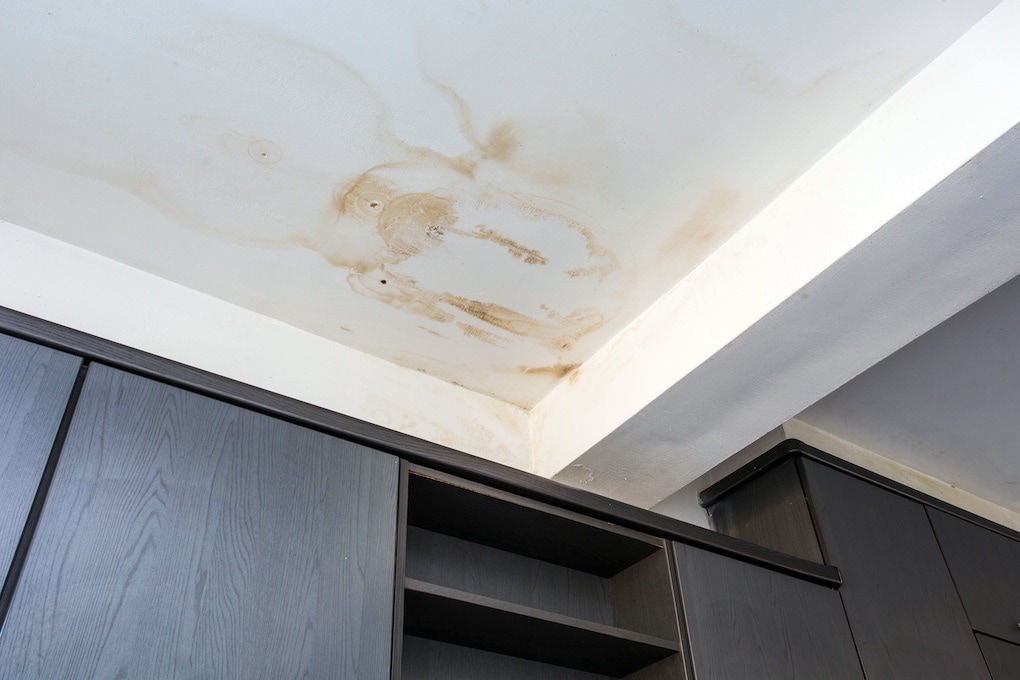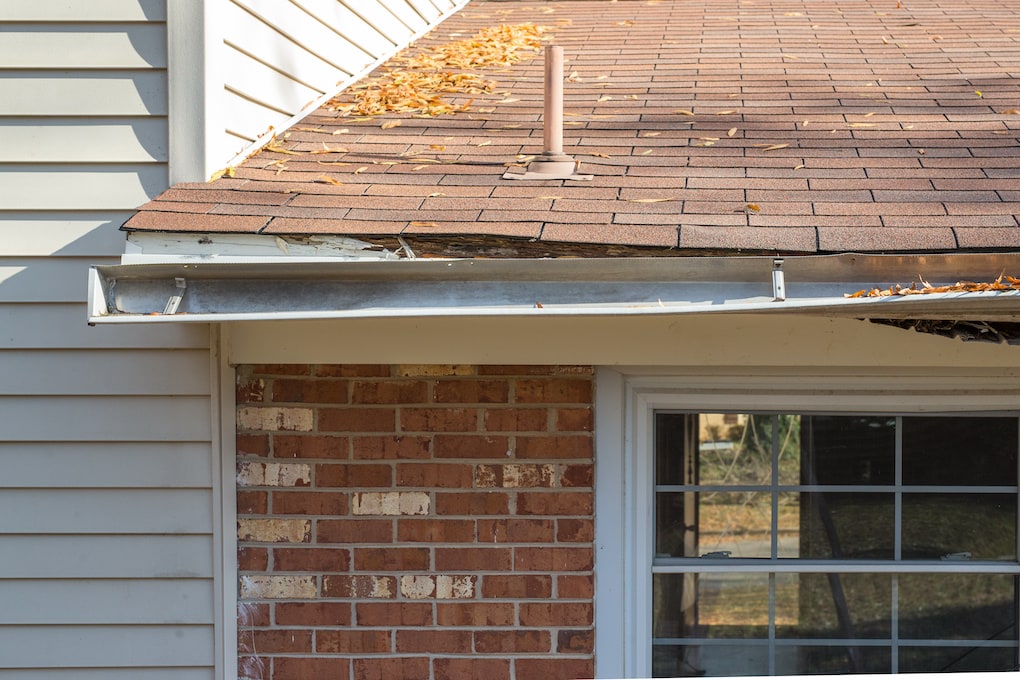When a severe storm hits, your home can take quite the beating. While most times your roofing and siding can handle it, there are occasions when the high winds and hail leave their mark. This is when it is crucial to be familiar with the most common signs of storm damage so you know whether or not your home is ready to protect you and your family when the next storm hits.
Unfortunately, you can’t predict whether your home will be damaged by a storm, but you can be prepared. That’s why we’re covering some of the most common signs of storm damage on homes so you know how to prepare and what to look for next time your home is hit by severe weather.
What Causes Storm Damage? ?
A storm doesn’t have to be a hurricane or tornado or cause detrimental damage to your home’s exterior. In fact, even a thunderstorm can damage your home if it brings strong winds, hailstones, or falling debris from nearby trees.
Wind Damage
Strong winds can do a lot of damage to your home. Wind can be strong enough to lift the edges of your roof and tear away shingles. It can also loosen or tear your shingles or even knock down your gutters.
Wind can also pick up large debris like patio furniture and branches that get pummeled into your home’s siding, windows, and roof. This debris can cause extensive damage and require siding or roof replacement.
If you have large trees that overhang your house, it might be a good idea to trim those branches back or get the tree assessed to prevent it from falling due to high winds.

Hail Damage
Large hail is not very common. But that doesn’t mean the small hailstones that fall throughout the midwest aren’t going to damage your home.
Even small hailstones can lead to dents, holes in your siding and windows, or broken gutters. On your roof, even the smallest hail can cause loss of granules which is your roof’s first line of defense. When those are gone, your roof becomes more susceptible to leaks and further damage.
Signs of Storm Damage
When a storm rolls through, you may notice your yard in disarray and worry that your home experienced more damage than to the landscaping. This is a definite possibility, especially if high winds or hail were involved.
Unfortunately, some storm damage isn’t easy to spot with an untrained eye. But we’ll list out some of the signs that you sustained damage so you can take action right away.
Visible Shingle Granule Loss
If you have an asphalt shingle roof and notice dark spots on your shingles that look like holes or dents, that could be granule loss. The small granules that cover your tar shingles can slough off from hail. These spots then become susceptible to leaks if left unrepaired.
You can also look for granules in your gutters or downspouts, which means they broke off from hail and flowed down into the gutters. This is a good sign you need to get your roof inspected.
Missing Shingles
As we said, the wind can be strong enough to lift up the edges of your shingles. With enough force, your shingles can tear off, especially on older roofs where the seams and nails may not be as strong as they were 15 years ago.
Missing shingles are the most obvious sign of storm damage on your roof and need to be tended to immediately. Without your shingles, the roof sheathing or insulation underneath is now exposed, and you risk getting water seepage underneath your healthy shingles. If you can do it yourself, safely tarp the area if more rain comes. Otherwise, call your local contractor to help make a temporary fix until your shingles can be replaced.
Cracked, Dented, or Lifted Shingles
Like missing shingles, cracked, dented, or lifted shingles are all signs that your roof is damaged. If you were hit by severe hail, you will want to look extra close for cracked or dented shingles. While some hail damage can be hard to see from a distance, these dents can have small cracks which will let water seep in and risk further damage.
If you see any of these signs after a storm, it’s best to call in a professional for an inspection.

Signs of Water Damage
If you see water stains on your ceilings, that’s an obvious sign of a leak. Water stains can be caused by damaged shingles, ice dams, or even clogged gutters.
But not all leaks are as easy to spot as water stains on the ceiling. Check for dark spots in the attic, which is a good indication of water damage. Wet insulation is a sign that you have a roof leak and needs to be replaced as soon as possible.

Debris on the Roof
If you see large sticks or branches on your roof or near your siding, it probably hit your home with some force. With the debris in the way, it can be hard to assess the damage, but it is still vital to get an inspection to pinpoint any damage. Note: Don’t get up on your roof to remove debris or inspect yourself if it is not safe to do so.
Dents in Your Siding
Even small hailstones can dent your siding, especially if it’s made of aluminum or other soft materials. This is an easy fix but, if untouched, puts your home at immediate risk of leaks. Dents can loosen your siding or create small gaps or cracks in it that allow for water to seep in and damage the integrity of your home’s exterior and interior.

Clogged or Broken Gutters
If your gutters are clogged, that water has nowhere to go but down the side of your house and under the shingles. This can cause damage to the fascia (the boards along the roof edge) and soffit (the underside of an eave).
The gutter system is also responsible for carrying away roof runoff, so if the gutters are overflowing or broken, that water can damage your roof and even enter your home.

Visible Damage to Roof Assets
The other elements of your roof, such as the pipe boots, vents, chimney, soffits, eaves, gutters, etc., can be the first sign of damage. If you see dents or cracks in any of those, there’s a good chance other areas of your home were damaged as well—call a professional roofer right away.
What to do if Your Home is Damaged in a Storm
If you notice any of the above signs, the first step to take is to call a professional roofer like Northface Construction to come to do an inspection. An inspection will get a close-up view of your home to reveal any damages (big and small), and inform you on whether or not you should consider repairing or replacing your roof.
Next, making any temporary repairs or precautions to cover up holes or potential leaks is key to preventing any further damage. For example, if your roof or siding was cracked during a storm, and more rain is on the way, time is of the essence to make sure nothing more damaging occurs.
Water leaks can lead to mold and mildew growth that you can’t see, which is highly dangerous to you and your family. Not to mention, it can mean costly repairs in your future.
Next, if the damage is extensive enough, you may want to contact your insurance company to file a claim against your homeowner’s insurance. Your insurance will likely cover storm damages as long as the damage wasn’t due to wear and tear or other factors.
Lastly, schedule a time to get your home repaired by Northface Construction. We’ve been in business a long time and know how to handle just about any sort of damage that comes your way.
We know what to look for, and our thorough inspections check your house from head to toe. We will document everything and give you an accurate estimate before we even begin working on your home.
If you see any of these signs after a storm, don’t wait—call Northface Construction for an inspection! We’re here to help.


